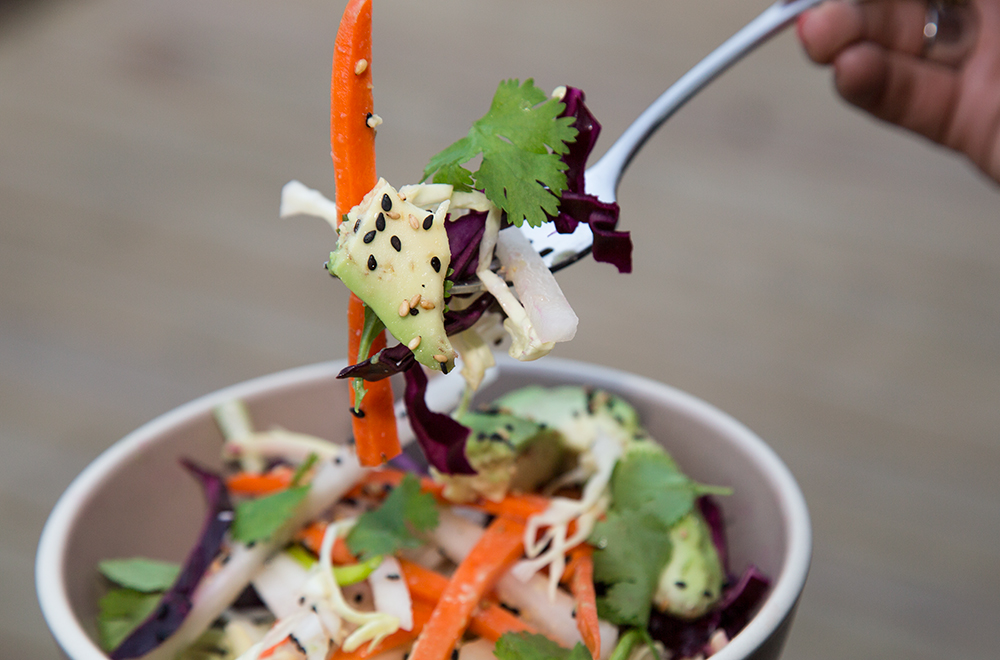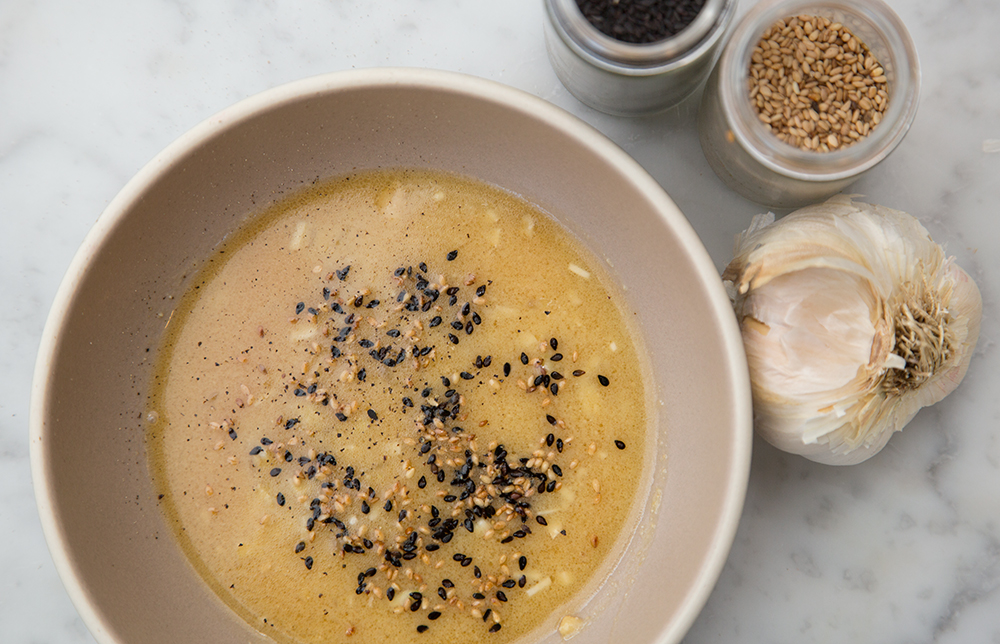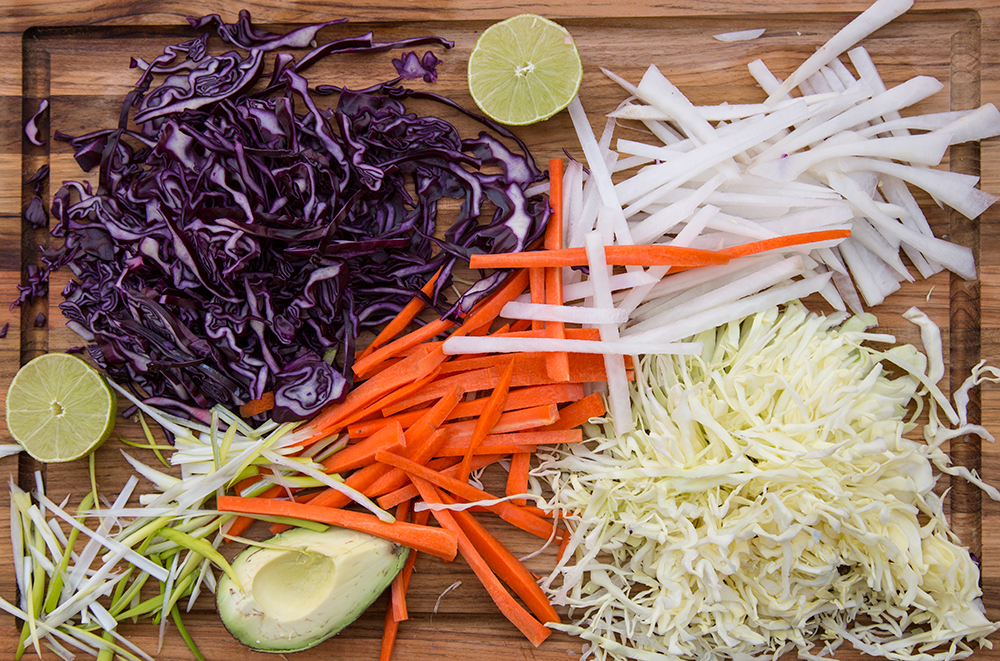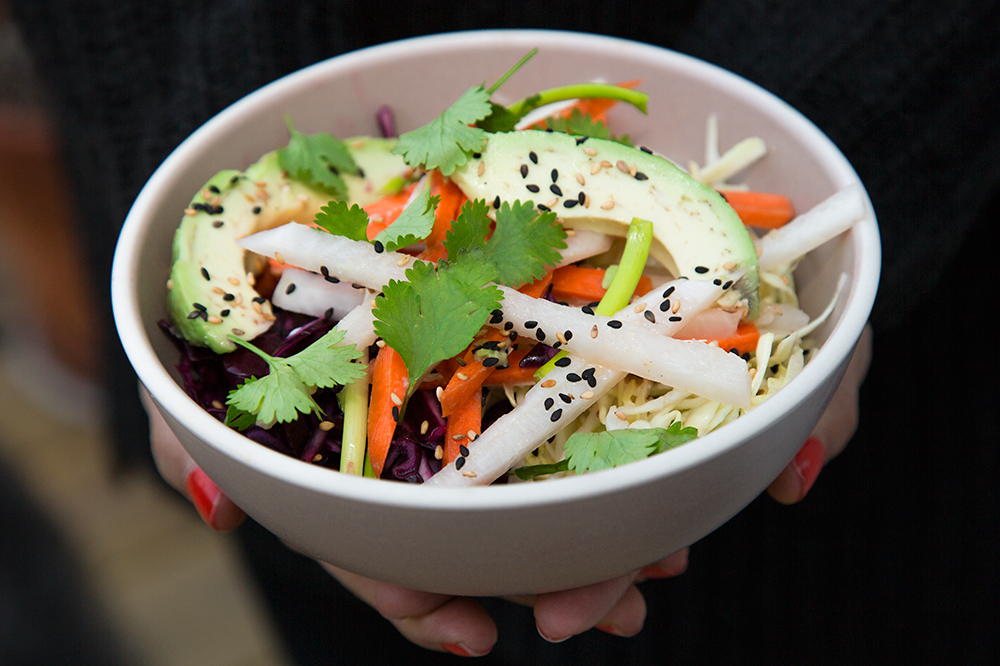Shredded Cabbage, carrots, daikon radish and Black Sesame Seeds
Cabbage Slaw with Miso-Honey Vinaigrette




NOTES
Vegan, nut-free salad with an Asian twist.
I dressed the cabbages and the other veggies separately because the color of the purple cabbage bleeds into the mixture otherwise. This is not so pretty. If you want to speed up the process, toss all the veggies with the dressing together at once, but I prefer keeping the colors clear and distinct, even if it means taking a little more time to compose the salad.
RECIPE
DIFFICULTY
MODERATE
SERVES
4
PREP TIME
10 MINS
Salad
-
1/4purple cabbage
-
1/4green cabbage (you could use Napa cabbage too if you prefer)
-
1medium carrot, peeled
-
1-2small daikon radish, peeled
-
4green onions
-
1hass avocado
Dressing
-
1tbswhite miso paste
-
1tspfresh grated ginger
-
1clovegarlic
-
1tbspeanut oil
-
1tbstoasted sesame oil
-
1tspsweet Mirin vinegar (seasoned, sweeted rice vinegar)
-
1tsprice wine vinegar
-
1tsphoney
-
1tbswhite sesame seeds
-
1tbsblack sesame seeds
-
1lime, juiced
POSTED UNDER
- Asian,
- Julia's salad,
- slaw,
- vegan,
- Winter
I don’t often cook with Asian flavors. They make me feel like a kid with their first chemistry set, combining ingredients willy-nilly until something spontaneously combusts. But recently I have been compelled by miso, an impressively versatile ingredient that can be used as a marinade, dressing or soup base. Miso is made from fermented soybeans and rice or barley, and comes in a variety of colors. I thought I was allergic to it for the longest time (I have a soy allergy), but recently learned that I was able to eat fermented soy products. If you have a soy allergy check with your doctor first, but apparently this is a common loophole (hooray!)
White miso (actually kind of beige in color) is the best variety to use for salads because it is light and a tiny bit sweet. Because it is fermented, if kept in the fridge, your miso might outlive you (I have never seen it go bad).
The other secret to making a better than average slaw is cutting your components down to the same size. So, my daikon sticks and my carrot sticks are cut to the same length, and their thickness is proportional to the thickness of the cabbage slices. This might seem finicky, but when I think of what sets home cooking apart from restaurant-quality fare, it often has to do with presentation and details like the way things are cut. It also aids one in creating the perfect bite, all the pieces equal in the microcosm of my salad bowl.